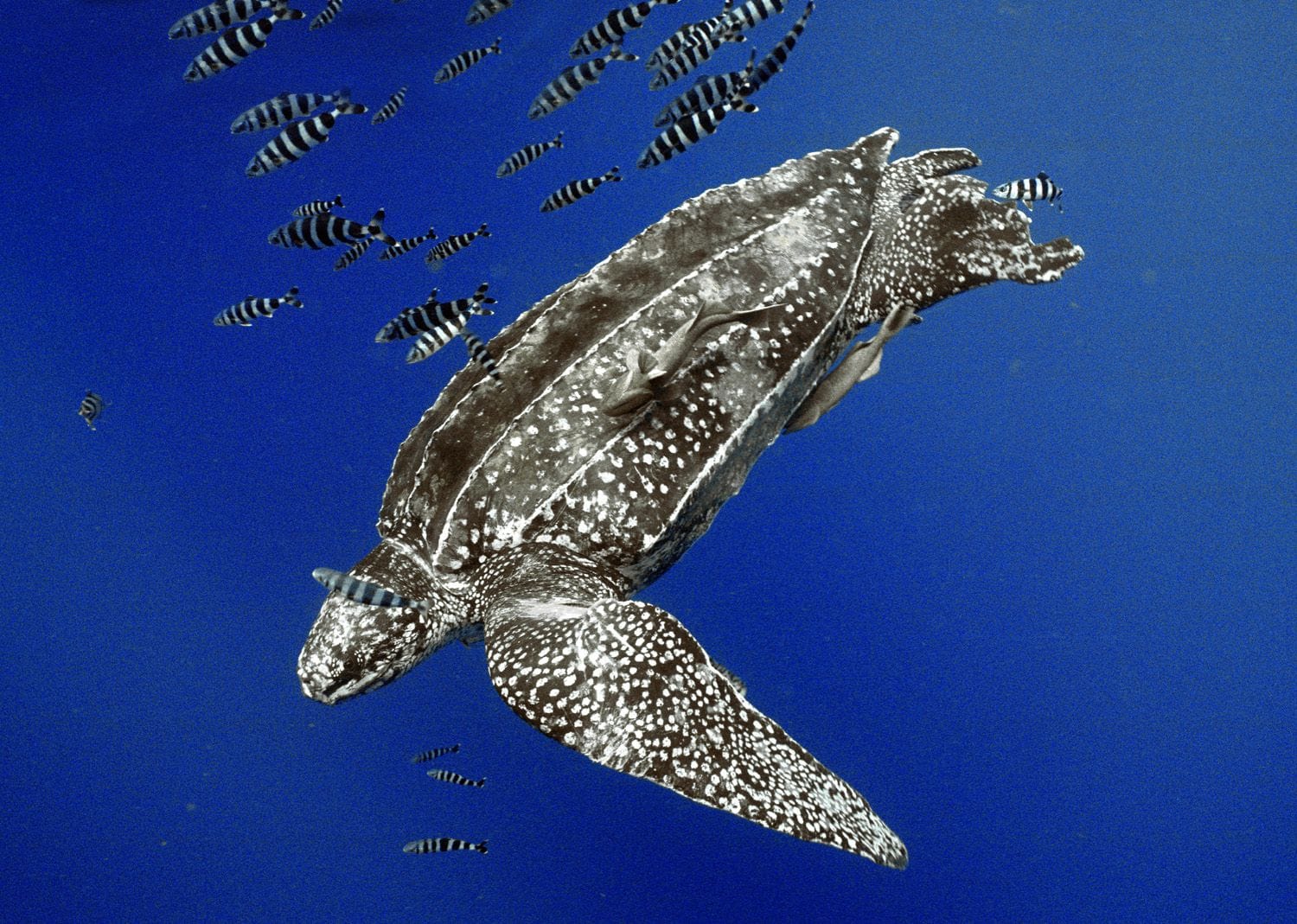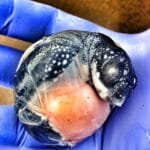A Mouth Built for Jellyfish: No Teeth, No Problem!
Dive into the extraordinary world of leatherback sea turtles and uncover the secrets hidden within their mouths. Unlike typical sea turtles, leatherbacks possess a unique beak-like mouth, devoid of teeth. Instead, their jaws are adorned with sharp, keratinous cusps, ready to grasp and tear unsuspecting jellyfish. But the real marvel lies within their esophagus, where rows of formidable spikes, known as papillae, await their prey. These backward-facing spines act as a biological sieve, trapping jellyfish while allowing water to escape, making the leatherback’s mouth a formidable jellyfish-eating machine.
Unveiling the Secrets: A Closer Look at the Leatherback’s Unique Adaptations
The leatherback turtle’s mouth is a fascinating example of how animals adapt to their environment. Imagine a creature that eats almost nothing but jellyfish – slippery, delicate creatures with barely any nutritional value. That’s the challenge facing the leatherback turtle, the largest sea turtle on Earth.
Now, take a peek inside a leatherback’s mouth—a symphony of specialized features designed for one purpose: devouring jellyfish. Leatherback sea turtles have unique mouths that help them feed on jellyfish. The structure of their mouth allows them to filter out the water while keeping the jellyfish inside. To learn more about the leatherback sea turtle mouth, click here.
A Mouth Lined with Spikes: The Role of Papillae
You won’t find rows of sharp teeth inside this turtle’s mouth. Instead, their mouths are equipped with hundreds of sharp, backward-pointing spikes called papillae. These papillae line their entire mouth and continue down their throat, acting like a trap—making it nearly impossible for a jellyfish to escape once caught. Think of it like a fish hook, but instead of one hook, imagine hundreds, all pointing inwards. When a leatherback catches a jellyfish, the papillae latch onto the slippery body, preventing it from getting away. Leatherbacks also have strong, beak-like jaws that help them grasp and tear their prey. Imagine a mouth perfectly designed to handle slippery, squishy jellyfish—that’s what a leatherback sea turtle’s mouth is all about.
This ingenious design doesn’t end in the mouth. The esophagus, the tube leading to the leatherback’s stomach, is also lined with these sharp papillae. This structure ensures that even if a jellyfish manages to wriggle free from the mouth, it’s likely to get caught further down.
The Downside of Spines: A Threat from Pollution
However, this remarkable adaptation also makes the leatherback vulnerable. They often mistake floating plastic bags for jellyfish, and because of those backward-pointing spikes, once the plastic is in their mouth, it’s tough to get out. This can lead to serious problems, blocking their digestive system and even causing death.
The leatherback turtle’s mouth is a testament to the power of natural selection, a perfect tool for a jellyfish-eating specialist. But it’s also a stark reminder of how human actions can threaten even the most well-adapted creatures on our planet.
A Numbers Game: How Many Leatherbacks Are Left?
We’re talking about a critically endangered species here. While there are thousands of leatherbacks still swimming the oceans, scientists believe there are probably only around 30,000 adults left worldwide. Sadly, their numbers have been dropping for decades. It’s a mix of things causing this decline—their homes are disappearing, they’re getting caught in fishing gear, and the planet’s changing climate is making things tougher for them.
Think about it: these incredible creatures are the biggest turtles on Earth! They don’t even have teeth. Instead, they use these spiky things in their mouths and throats to trap and eat jellyfish. Imagine that—a mouthful of spikes! This unique adaptation lets them gobble down enormous amounts of jellyfish, which actually helps keep those populations in check. But even though they play such a vital role in the ocean, they’re facing an uphill battle for survival. That’s why it’s so important to protect them from things like habitat loss, accidental capture in nets, and pollution.
Beyond the Spikes: Other Fascinating Facts about the Leatherback Mouth
- No Teeth, Just Spikes: Leatherback turtles are the only sea turtles without teeth. Instead, they have those fascinating papillae we’ve been talking about.
- A Mouth Like a Conveyor Belt: Those backward-pointing papillae in the mouth and throat work like a conveyor belt, guiding jellyfish down to the stomach while letting water escape.
- A Stomach for Jelly: Leatherbacks have massive stomachs that can hold up to 1,000 pounds of jellyfish at a time!
- Sensing Their Prey: While scientists aren’t entirely sure, some research suggests that the papillae in a leatherback’s mouth might also help them “taste” or “feel” their food, ensuring they’re actually swallowing jellyfish and not something harmful.
Laura Bridgman and Leatherback Turtles: Unexpected Connections in Nature
It might seem strange to mention Laura Bridgman, an American deaf-blind woman who became a famous author and educator, in an article about leatherback turtles. To learn more about Laura Bridgman, click here. But her story, like that of the leatherback, highlights the incredible adaptability of living creatures. Both overcame seemingly insurmountable challenges to thrive in their environments. Both remind us that even in the face of adversity, life finds a way.
Protecting a Species: Why Understanding the Leatherback’s Mouth Matters
By understanding the unique adaptations of the leatherback turtle’s mouth, we gain a deeper understanding of these magnificent creatures and the threats they face. The plastic we use on land finds its way into the ocean, endangering these gentle giants. By learning about their plight, we can each play a role in protecting leatherbacks and ensuring their survival for generations to come.
- Unveiling Bernhard Caesar Einstein’s Scientific Achievements: A Legacy in Engineering - July 15, 2025
- Uncover who is Jerry McSorley: CEO, Family Man, Business Success Story - July 15, 2025
- Discover Bernhard Caesar Einstein’s Scientific Contributions: Unveiling a Legacy Beyond Einstein - July 15, 2025















